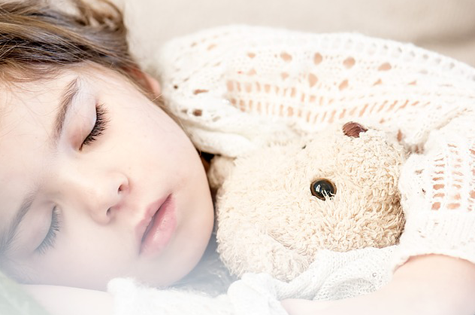Some people sleep alone, some with a spouse or children or both. This may include where they live, how their family sleeps, even how big the house is or how many bedrooms it has.
What we aim for is a sleep environment that is comfortable and safe for the children in their care. Ensuring children have enough sleep is as important as feeding them healthy food and ensuring they receive plenty of fresh air and exercise (for older children).
Many children share rooms with a sibling or may sleep in noisy houses, others have complete silence. Babies who are nursed to sleep, held or put in a sling may find a cot lonely and frightening.
Try and think of sleep and nap routines as part of a child's individual curriculum. All children have individual sleep requirements and you will have most success if you try and work within their schedule. Learning to understand your child’s sleep requirements is very important.
Special blankets or soft toys may help young babies and toddlers feel connected to something that is theirs and they feel more secure.
Choose a quiet activity like reading or puzzles to help children stay calm after their meal. It is much harder to calm the children if they race away from the table and run around the room than it is to maintain the post-lunch lull.
Turn the lights down low and play some soft music as children are finishing lunch. This signals that it is time for rest.
Remember consistency in nap and sleep time is very important. When responding to night waking one of the key factors in sleeping is being consistent. When parents do the same thing every night the baby will have a better idea of what is expected.
How can you create a sleep-inducing environment for your baby to help them sleep better?
Keep phones, electronic gadgets, screens and bright lights away from babies and toddlers before nap or bedtime.
The blue light emitted by screens on phones, computers, tablets, and televisions restrain the production of melatonin, the hormone that controls your sleep/wake cycle or circadian rhythm. Reducing melatonin makes it harder to fall and stay asleep. I like to recommend no blue light and gadgets at least half hour before bed time.
It may seem harmless putting you baby or toddler in front of the TV or iPad to give you a few minutes to do something before bed thinking they will chill or unwind with a favourite wiggles or hi-5 but by keeping their mind engaged, technology can trick your brain into thinking that it needs to stay awake.
About 72 percent of children ages 2 to 17 sleep with at least one electronic device in their bedroom, which leads to getting less sleep. To get a better night’s sleep, parents should limit their kids’ technology use in the bedroom, and mum and dad should be solid role models and set the tone by doing the same.
Have a regular routine and schedule and bedtime close to the same time every night, depending on tired signs. This helps to regulate the body's clock and could help them fall asleep and stay asleep for the night. Consistency is very important!
Always watch for the sleep cues of you baby and toddler. Easier to go to sleep when you work with the biology clock and sleep clues than against them. When you see the signs try get you child to sleep….
At bath time massage is always relaxing and helps babies and toddlers relax as part of bedtime routine.
For toddlers it is good for them to have physical activities during the day to burn excess energy. Preferable not just before bedtime.
The bedroom should have a temperature – 16 to 20 C degrees or between 60 and 67 F degrees. Your bedroom should also be free from any noise that can disturb your sleep. Check your room for noises or other distractions not too many interesting toys not packed away. Consider using blackout curtains, and "white noise".
Please always check that the mattress your baby or toddler sleep on is not too soft. A firm mattress that meets Australian standards is imperative for safety.
ABOUT THE EXPERT
Cheryl Fingleson is a paediatric sleep consultant. www.thesleepcoach.com.au


















__small.png)










